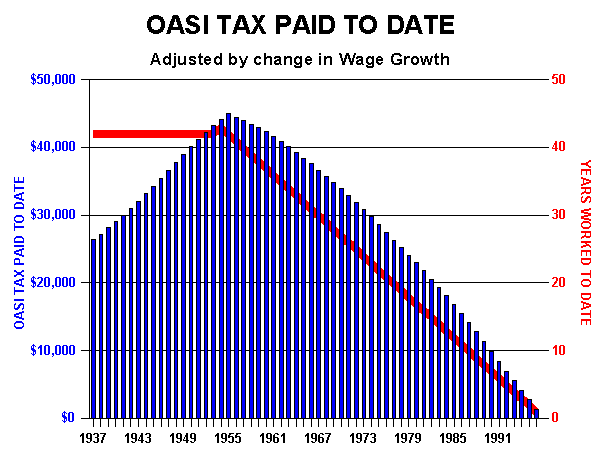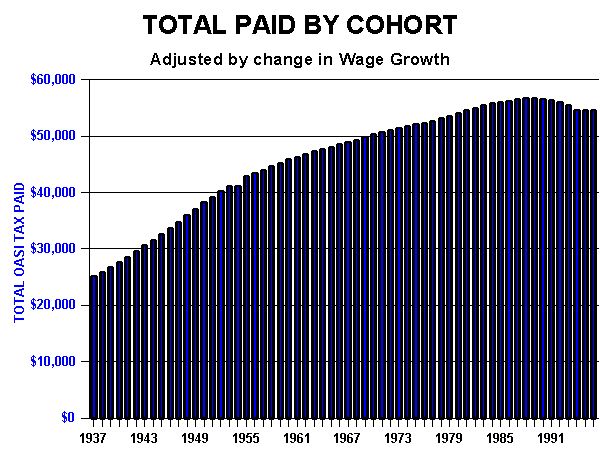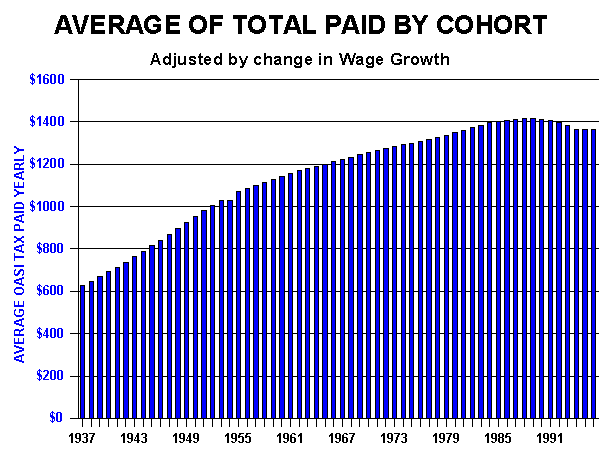



COMPARISON OF PAST AND CURRENT OASI TAXES
© William Larsen
October 9, 2000
How much tax was paid in earlier years? How do we evaluate relative taxes when so much has changed? Wage growth has certainly taken place. Should any comparison be done on the basis of inflation or should it be based on the increased living standard?
This analysis attempts to compare earlier OASI taxes paid with today's workers. It assumes the average United States wage was earned in each year between 1937 and 1996. The designated OASI tax rate and OASI base for each year were also verified in order to make sure the correct tax was calculated each year. The OASI tax dollars were then adjusted by the change in the wage between each year and those of 1996. In simple terms the OASI tax paid in 1937 was multiplied by the change in the average wage in 1937 and that of 1996. Each succeeding year was done the same way.
The following four charts show a year by year analysis of the OASI tax. All dollars have been equalized to those of 1996. Keep in mind those who worked in year prior to 1983 paid most of their taxes in the last seven years. This is one of the major difference between Figure 3 and Figure 4.
From the stand point of wealth creation, the post ponement of the higher
OASI
tax is beneficial to earlier workers. It allowed greater take home pay during
life's most important wealth creation period and allowed these savings to
compound.



